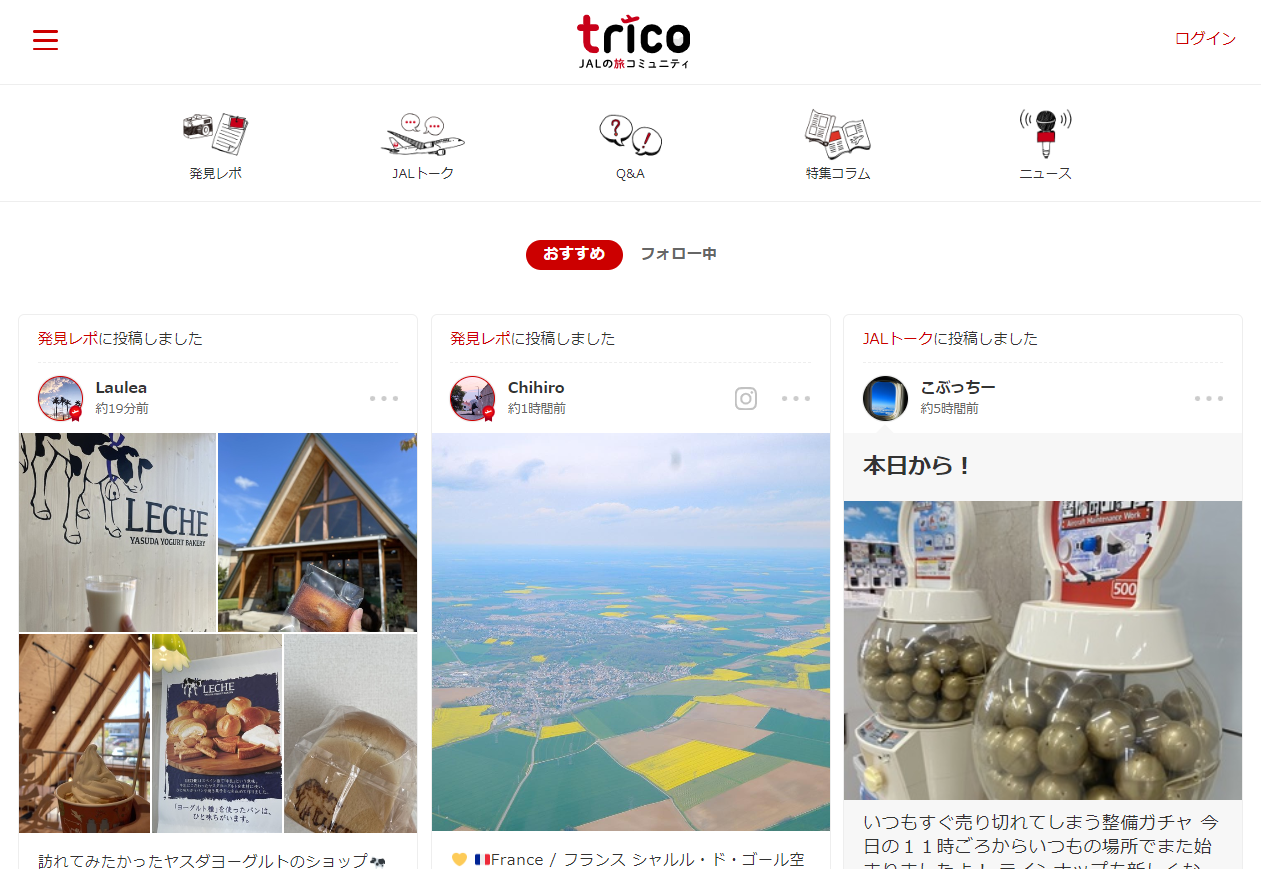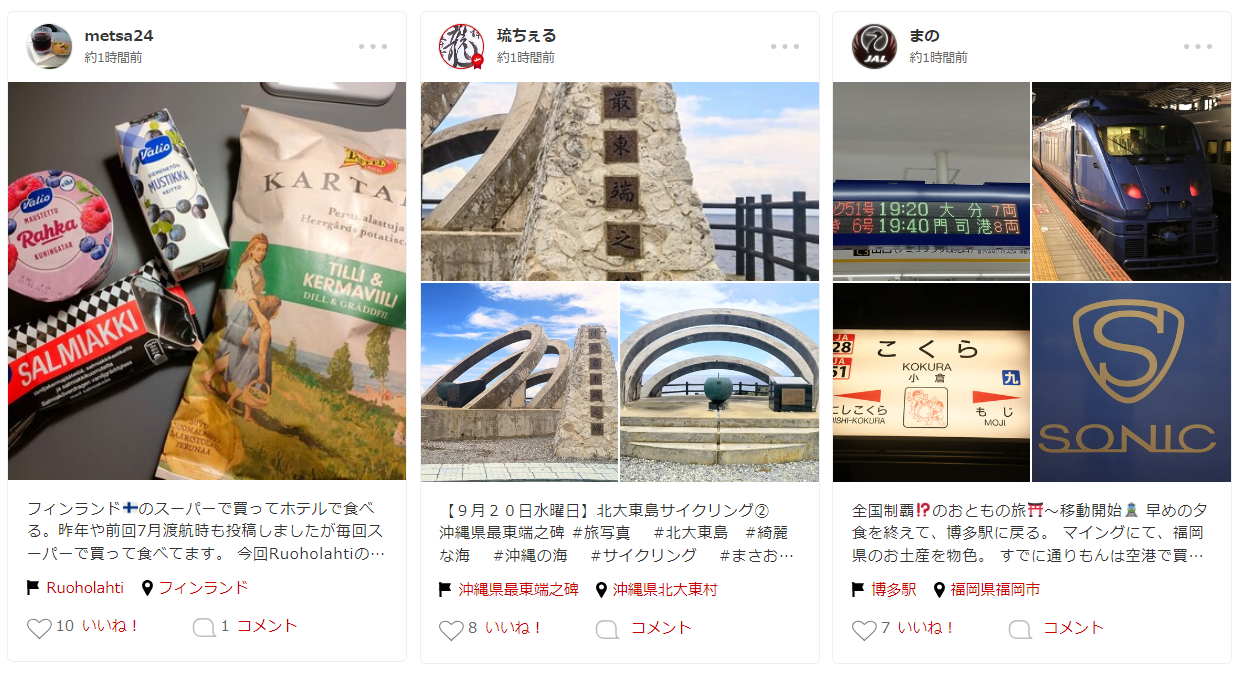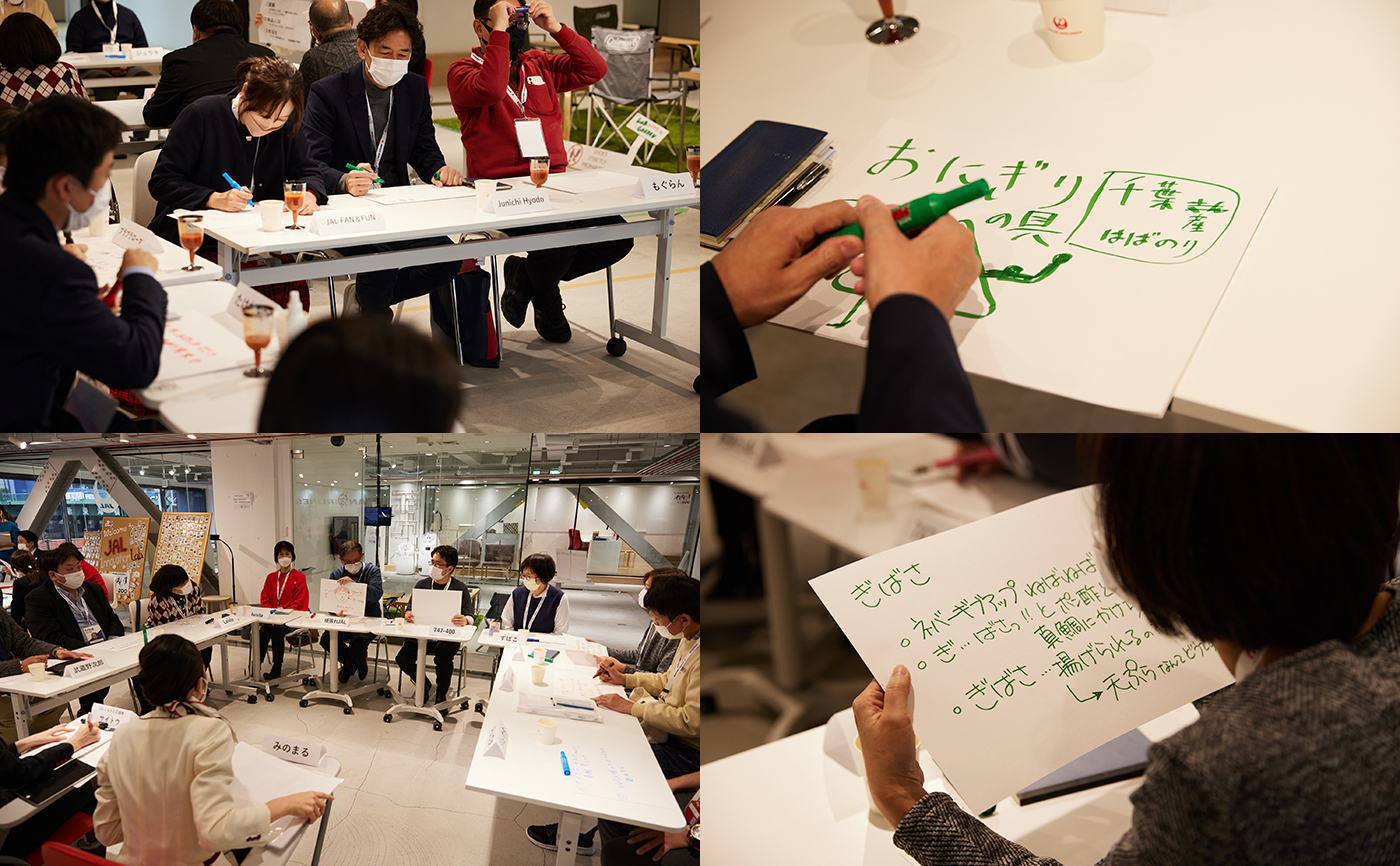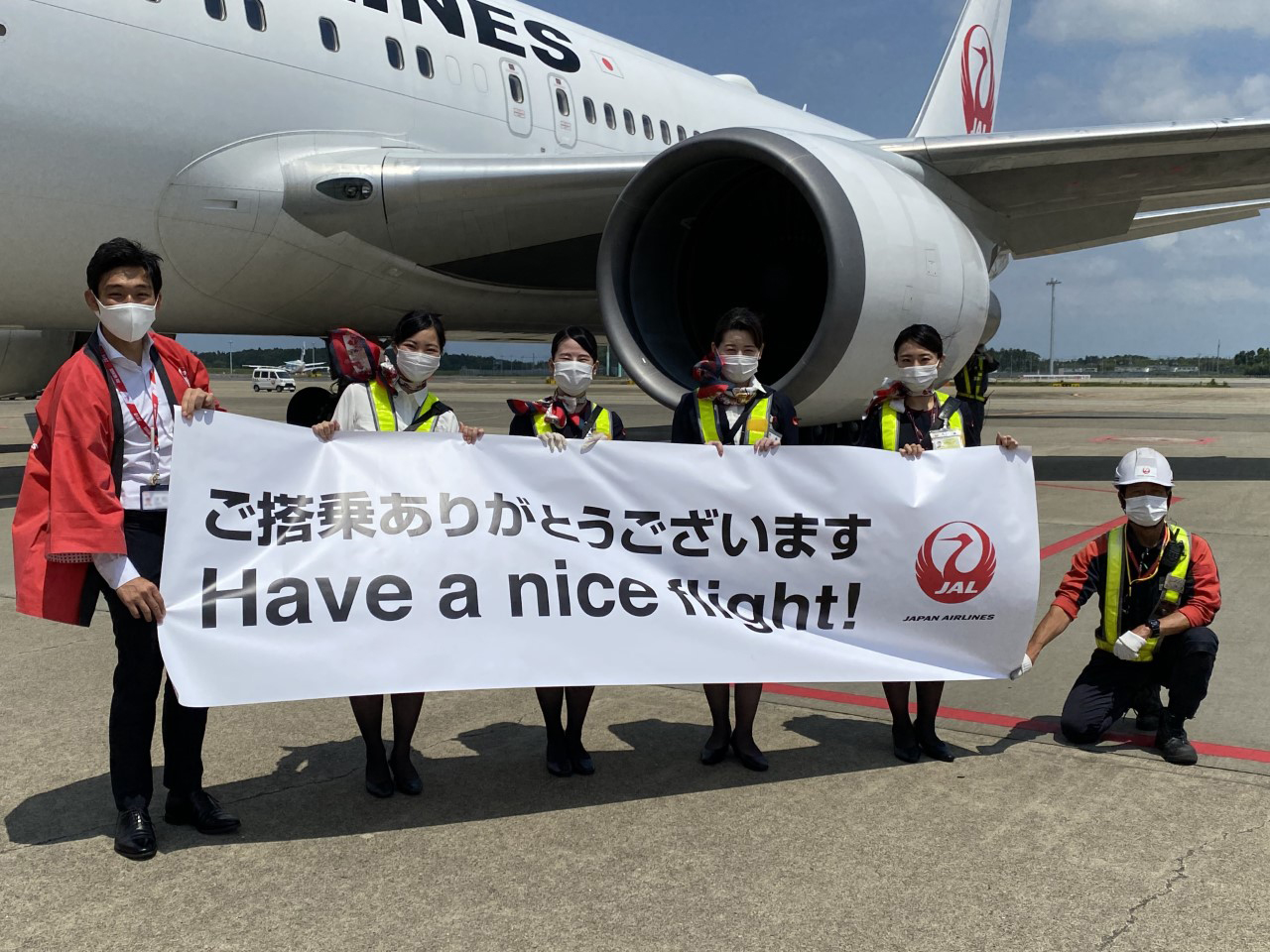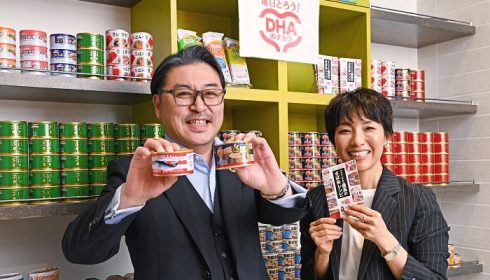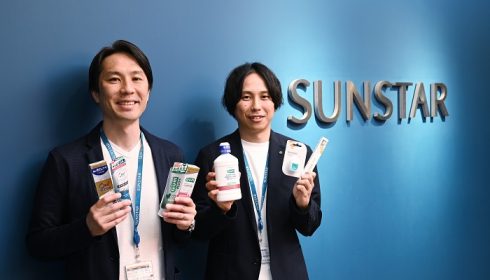The JAL brand damaged by the bankruptcy. How did the travel community "trico" and the official Social mediacontribute to the revival?
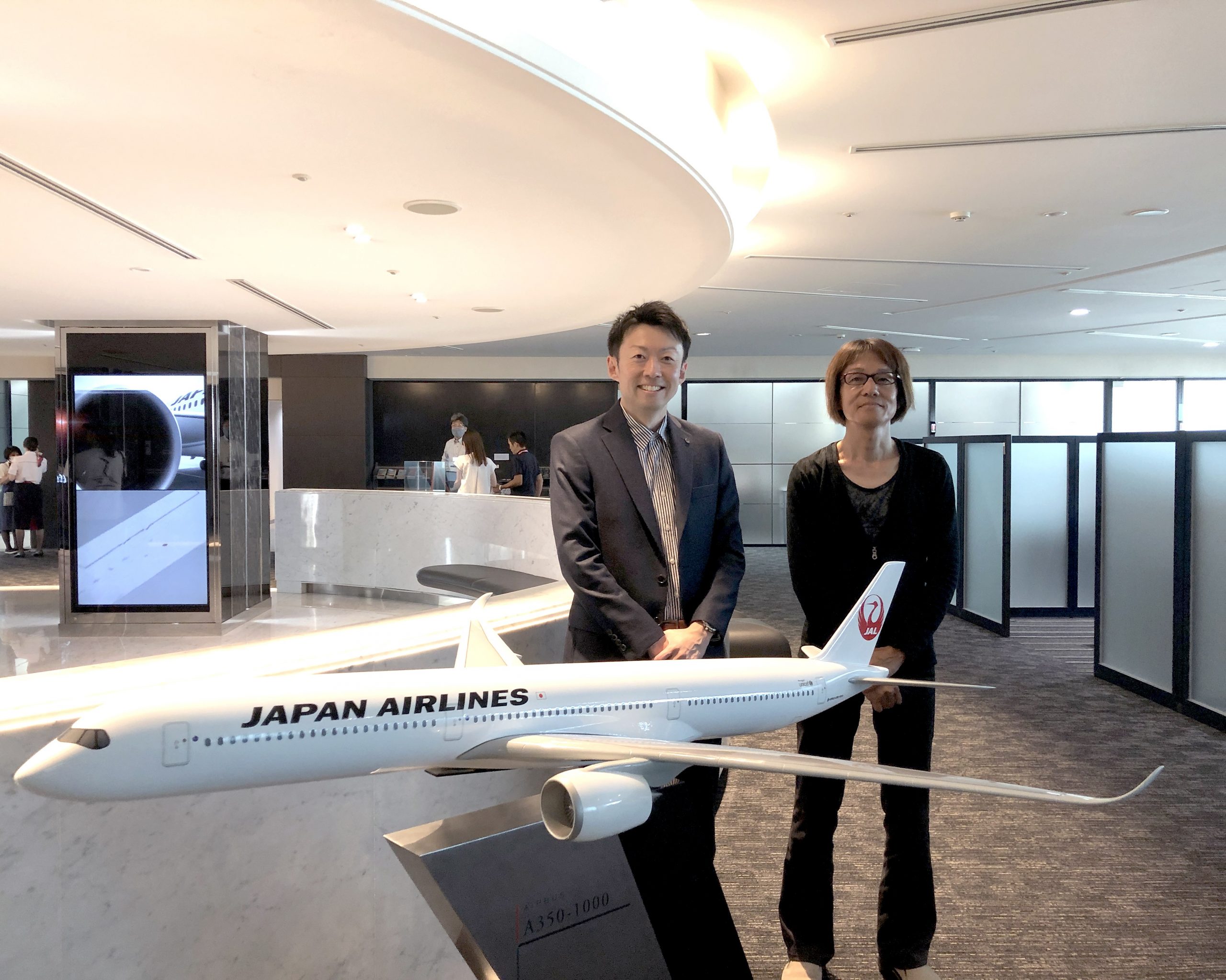
Fan marketing, D2C, and other terms vary, but more and more companies are now trying to connect directly with their customers. In this series of interviews with partner companies that practice partner relationship management (PRM), including communities, we will clarify "why direct connection is necessary" and "what companies need to change accordingly. The interviewer is Tatsuo Ishii, Executive Advisor of Kao Corporation, who has long been involved in brand marketing at Kao Corporation.
JAL was one of the first companies to use digital to connect with customers.
The company experienced a business failure in 2010, but a year later it launched a Facebook account. The company then set up a team dedicated to web communications and began full-scale operations, and now boasts around 2 million followers.
Furthermore, in 2019, the company will launch trico, a travel-themed community website. The ideal situation is being created where registered members can post photos of their travels and talk about their love of JAL, spreading the fever in a kind of self-driven way.
It goes without saying that it is important to have direct contact with customers in order to get to know them better, but JAL's business has always had real contact with customers at airports and onboard flights. What was the background behind their early efforts to create digital contact points?
Compared to the more than 30 million passengers who fly with JAL each year, the number of "trico" members is currently on the order of a trickle. What does the community, which at first glance makes little contribution to the business, bring to JAL?
We interviewed Mr. Toshio Yamana, who has been leading the Web Communications Team since its inception, and Mr. Takanori Konishi, who is currently in charge of the team.
To be recalled for the annual boarding opportunity
--I have been in marketing for a long time at a company called Kao Corporation, and for a general consumer goods company, the reasons for using digital to find a way to connect directly with our customers were obvious. Our business is BtoBtoC, and there is always a retailer between us and our customers, as well as the global e-commercesite as a virtual adversary. We felt that unless we made an effort to connect directly with them and learn more about them, we would eventually become a subcontractor to the global e-commercesite with its vast amount of customer data. However, JAL is different. They have always had real contact with their customers at the airport and on board their planes. What was the reason for working on Social mediaand the community?
【Yamana】 You are right in pointing out that JAL has always been connected to its customers, but on the other hand, our business has the problem that the frequency of contact with each customer is extremely low.
There are some people who fly all year round on business trips, but this is a small percentage of the total. Most people fly only once or twice a year, such as when returning home or during summer vacation.
For consumer goods, products are sold in supermarkets and convenience stores, so even if you don't buy them, you may have the opportunity to see them on a daily basis. However, this is not the case with airplanes. If we neglect airplanes, we will only have contact with them once a year.
And we are not the only ones who fly airplanes. There are so many airlines, both in Japan and overseas, that if we just do business as usual, we will be buried in the crowd.
Basically, airplanes are purchased from Boeing or Airbus, painted with their own designs, and flown by each company. Therefore, there is not much difference in the aircraft itself.
On the other hand, there is no big difference in what they do on board, such as serving meals and watching movies. If it is a full-service system, there is still not much difference. It is a completely commoditized business, and honestly speaking, if there is nothing extra, people will not "choose this airline over any other".
In order to have people recall the first time they fly, which for many people is only once or twice a year, it was necessary to communicate in some way other than during the boarding process. For this reason, we started to communicate and operate a community at Social media.
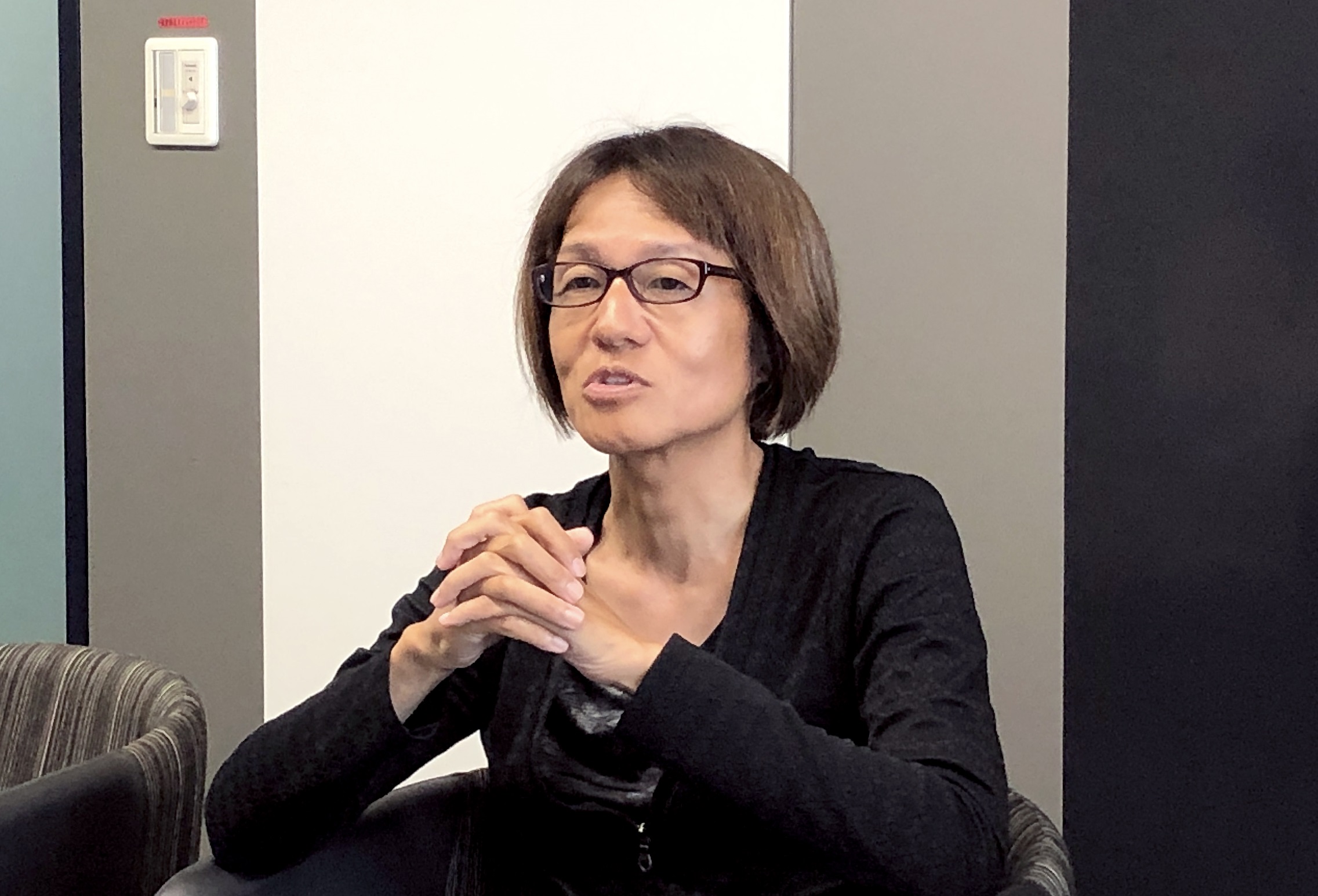
Japan Airlines Co., Ltd. Mr. Toshio Yamana, Web Sales Department
--The Facebook account was opened in 2011. A year before that, you experienced a business failure, if I may be so bold. Is there any relationship between your new initiative and the business failure?
【Yamana】 I myself did not join the team until 2016, but I was told by a member of the team at the time that the very reason we started Social mediawas because of the bankruptcy of the company.
After the bankruptcy, our employees shared a common desire to express our gratitude to Japan as a whole for giving us the chance to revitalize the company, and to let people know that we were working on various ways to revitalize the company.
Social mediaWe thought, "Even though we are in the midst of a management restructuring and do not have a large budget, we can do this on our own," and began using Social mediato communicate our message.
At this point, however, there was no team specializing in Social media, so about 10 employees got together in the after 5 and started discussing what to do and what not to do in a very small way.
--Not only JAL, but I think the business model of Japanese companies during the high-growth period was "just make good products and then just spend money on mass advertising and you're good to go. That is to say, they were "looking up" to their customers. Did the bankruptcy of JAL in some ways trigger a change in that corporate attitude itself?
【Yamana】 That's right. Before the bankruptcy, when I asked people what their impression of JAL was, the overwhelming response was that it was "bureaucratic" and "faceless. As you say, I think it is undeniable that there was a sense of being "JAL" from the top.
Naturally, our employees were aware that the world had this impression of us. We wanted to take the opportunity of our bankruptcy and rebirth to dispel this negative image. I have heard that it was with this in mind that the company started with a policy of communicating in a way that gave a proper "inside man" feel to the public.
Deep contact with a small but passionate group of fans
-- Following the operation of Social media, we are launching a travel community, TRICO, in February 2019. Why was it a community?
【Yamana】 Unfortunately, for the majority of people in the world, flying is simply a means of transportation. When it comes time to travel, where they spend their money is first and foremost on hotels and food, and the idea of upgrading to a higher airplane grade is difficult to come by.
For us, we are proud that flying on JAL is a special travel experience in itself, and we want as many people as possible to know how enjoyable it is. However, when we try to convey this to others, we inevitably end up being a little too forward.
That is why we turned our attention to the community. Although there are not many people in the world, there are already people who enjoy flying JAL airplanes. By carefully communicating with these people, we thought that the customers themselves would be able to convey their enjoyment and spread the enthusiasm to those around them.
-- Are you saying that social networking alone was not enough?
【Yamana】 The Facebook account currently has about 2 million followers, which is by far the larger population. However, we felt that Social mediawas inevitably a one-way communication from our side.
Even though we established a team specializing in web communication in 2016, we were a small team of four members at the time. We had limited resources to carefully communicate with each and every customer.
On the other hand, the small size of the "trico" team also made it possible for us to communicate with each customer carefully. From the beginning, we were not overly concerned with the size of the community, but focused on the depth of the community.
--You said that you took the community one step further from SNS as a means of connecting directly with customers, and that you hoped that customers themselves would spread enthusiasm for the service on their own. At what point did you start focusing on communities? Did you have a community in mind when you launched social media, or did you come up with the idea or issue while operating SNS?
【Yamana】 In that regard, it is the former.
I arrived at this job when the Web Communications team was created in 2016. So at that point, we had an organization, but nothing concrete had been decided about what we would do, and we started with a nearly blank slate.
So, when I arrived at JAL, I started by looking at the history of JAL's web communications. At the same time, I researched what other leading companies in the world were doing. I did some research on the Internet, and I also spent many nights attending seminars.
In this way, we identified all the things that companies in the world were doing that JAL had not yet been able to do, and created a roadmap of where we wanted to go over the next four years, and in what order and in what sequence.
The community was included in this process from the beginning. However, we thought it would be more difficult than sending out messages on Social media, etc., so we plotted it as something we would start two years later, around 2018, rather than starting on it immediately.
--Since it is a community operated by JAL, it might be considered a "JAL-branded community," but "trico" claims to be a "travel community," doesn't it? In fact, many of the photos posted on the site are of people on their travels. Why did you choose this way of presenting your brand?
【Yamana】 That was something we discussed tremendously with the people in charge of eLifebefore the launch.
I think that if a brand is well known and strong, it can be a community for that brand. For example, if you say Louis Vuitton has created a community, many people will post pictures of their Vuitton bags. Then, people who like Vuitton will see them and get excited, saying things like, "I didn't know there was such a limited edition bag," or "Someday I want one too. I think that would be enough.
But what would happen if JAL did that? The site would probably be full of airplane photos, and only people who love airplanes would be able to enter. If that were the case, it would not create the kind of expansion we were hoping for. Based on this thinking, we concluded that what we should be aiming for is not a "JAL community" but a "travel community.
We asked our members to post photos related to their travels. They do not necessarily have to be photos of airplanes or in-flight scenes. It is enough if they make the viewer think, "I want to go there, too," or "I want to go on a trip. If they then decide to go on a trip with JAL, that is even better.
To be more specific, we set up two posting sections, "Discover Repo" for posting photos of travel destinations and "JAL Talk" for posting things related to JAL, and the actual posting ratio is about 8:2. The photos with strong JAL elements occasionally appear among the photos of various travel destinations. As a result, I think we have settled on just the right balance.
A virtuous circle created by face-to-face relationships
--I would like to ask Mr. Konishi, who is currently in charge, what kind of operations do you have in place to revitalize the community?
【Konishi】 "trico" is an online community, so it cannot start without user contributions. We need to encourage people to contribute in some way.
However, no matter how many posts are made, it is meaningless unless the people who see them want to go on a trip. Therefore, to ensure both quantity and quality of submissions, we set monthly themes and hold contests to award excellent submissions in line with the themes.
In parallel with online measures, we also hold offline events such as factory tours and product development roundtables once every two months. The main purpose of these events is to increase loyalty and promote interaction among fans, and many of our members look forward to them very much.
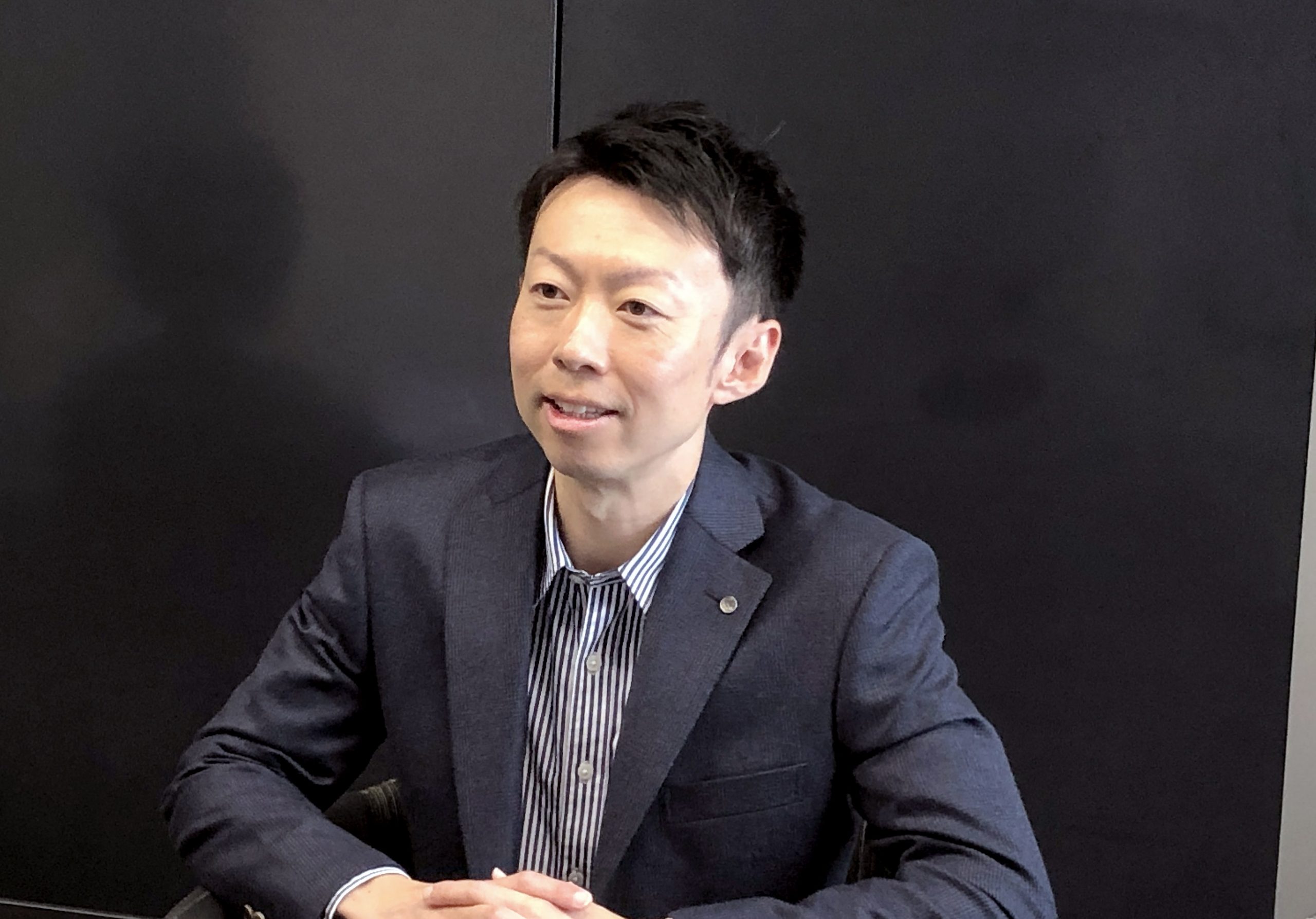
Japan Airlines Co., Ltd. Takanori Konishi, Head of Web Communication Group, Public Relations Department
【Yamana】 When the community was first launched, members could not see each other's faces, and even if they "liked" someone's post, it was difficult for them to comment on it.
As the number of real events increased and faces and usernames began to match, the number of comments gradually increased, and has now quadrupled since the community was launched.
--The relationship created online becomes more intense offline, which in turn promotes online interactions.
【Yamana】 Yes. However, this was not our goal from the beginning. Some of our members may prefer to remain anonymous online. Because of this concern, we were cautious about disclosing usernames.
However, after holding several events, we decided to give it a try and made name tags with our user names on them and handed them out. This was unexpectedly well received, and we are glad we gave it a try.
-- "The name tags made by the officials were well received", isn't it because, from the members' point of view, they perceived that their activities on "trico" were "known" and "recognized" by the JAL officials? Didn't this lead to a kind of fulfillment of their need for approval?
Yamana] That may be so. Speaking of "being known" and "being recognized," we have had a loyalty program, or what we call a frequent flyer program, in place since long before we started the community.
I probably don't need to explain it again, but the more you fly, the more miles you earn. The more miles you accumulate, the higher your status and the more services you can receive. That is how it works.
However, this is a very high hurdle for ordinary customers. Unless you go on a business trip twice a month for company business, you cannot become a member of the higher tier.
However, among the majority of customers who do not reach the higher tier status, there are customers who say, "I only fly JAL twice a year, but when I do, it is always on JAL flights, and I have been flying only on JAL for decades. I think it is very important to increase the number of such people, but until now there has been no place for them to be recognized.
The community has that potential. Unlike the frequent flyer program, in the case of the community, the number of times you fly has nothing to do with it; if you have a strong love for JAL and make a lot of contributions, you can become a big part of the community. We also have an ambassador system within the community, so by saying, "We would like you to become a TRICO ambassador," we increase the likelihood that you will be more proactive in sending out messages. This was our goal from the beginning.
In fact, I heard that highly enthusiastic members wear this nametag when they go somewhere on a JAL flight. Then, a flight attendant who knows them will say to them, "Oh, you are a TRICO member, aren't you? This also creates opportunities to connect with members.
--I know you are talking about the members, but what about within the company? I think that community is an activity that is unlikely to lead to direct sales. For this reason, many companies are reluctant to start such activities, or even when they do start, they don't last long. How do you explain the significance of community within your company?
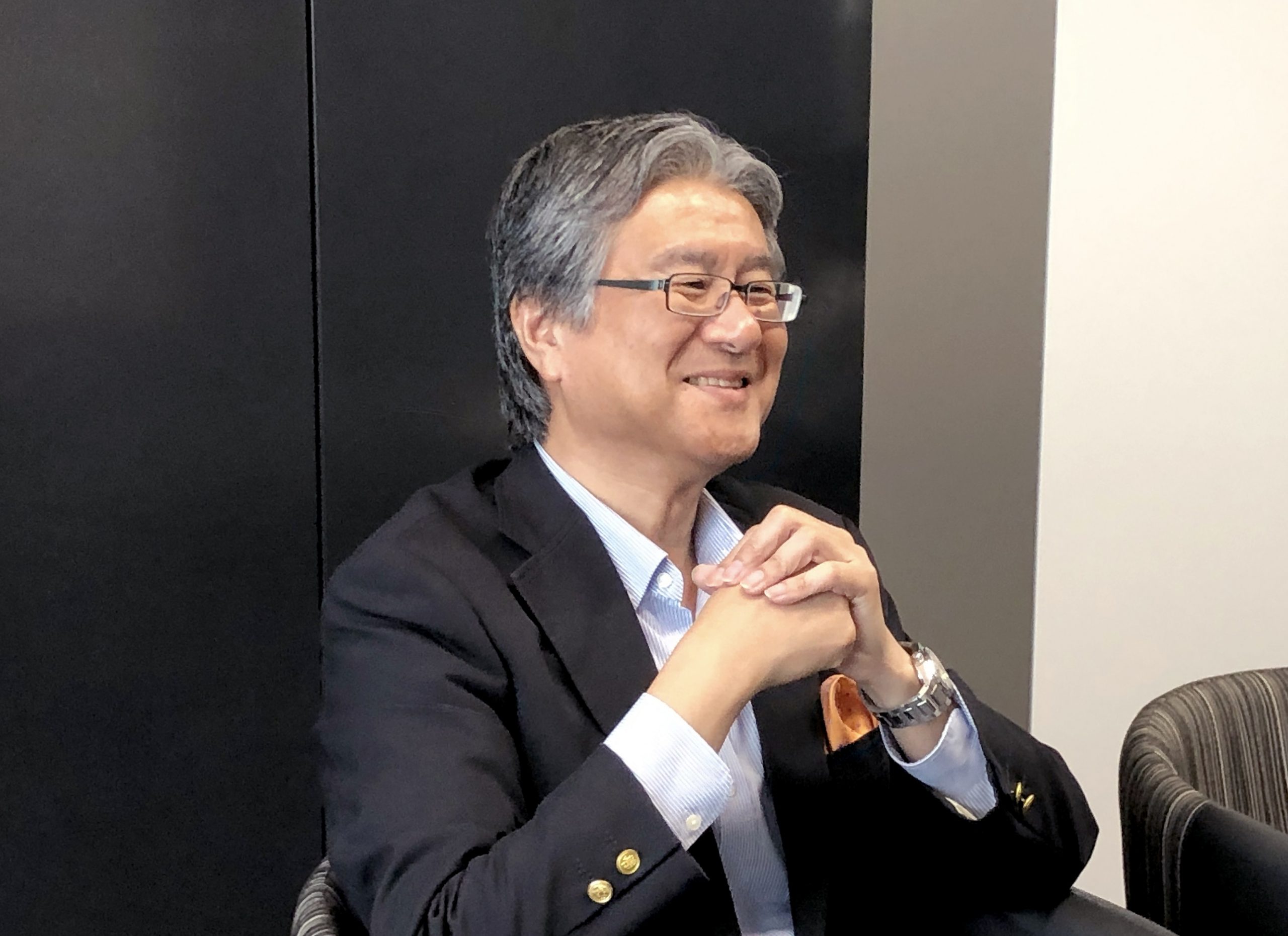
Tatsuo Ishii, Executive Advisor, eLife Inc.
【Konishi】 When you register for "trico," we set your membership number, and by linking it to your boarding data, we can check the extent to which your activity on "trico" has subsequently led to boarding.
The actual data shows that the frequency of use is as high as that of customers with higher status in the frequent flyer bank.
What I found particularly amazing was that even with the Corona disaster, there was not much of a drop in usage. Even during the period when general customers' usage dropped considerably, only "TRICO" members were not affected that much. When I saw this kind of data immediately after I arrived at JAL, I realized that these fans are truly living a life closely connected to JAL.
I try to explain well to the company using such data.
【Yamana】 With a general Social medialike Facebook, it is technically difficult to link with our own data, but "trico" uses our own domain, so it is easy to do so.
Of course, we don't know if all of the customer's subsequent actions were made possible by "trico," but we think we can show the contribution to our business in figures by combining it with surveys and other data.
Customer Enthusiasm Spreads to Employees
--You mentioned that you are making an effort to show the significance and value of the community in numbers, but in addition to that, are there any other positive impacts that the community is having within the company?
【Konishi】 I believe there is. The other day I had a chance to talk with a staff member of a group company based in Osaka, who said, "You know, you TRICO members. They often come to Osaka for fun.
I think that the customer who visited Osaka had probably been a fan of JAL for some time. However, if it were not for the "trico" community, I don't think the staff would have recognized the customer.
Until now, we have only been able to look at customers' loyalty to JAL in terms of their Loyalty Program and JAL Mileage Bank status.
With the establishment of the "trico" framework, we were able to visualize fans who did not fit into the conventional framework. I believe that this has allowed an increasing number of staff to realize that "we are supported by these customers as well.
--That is very important. Direct contact with the tremendous enthusiasm that customers radiate will probably change the way each and every employee approaches his or her work and customers, as if to say, "I didn't know there were people who love JAL so much," or "I can't be rude to these people. If such an effect is achieved, even if it does not directly lead to sales, it is enough to say that it plays a part in improving JAL's brand.
【Konishi】 I hope so. I have been happily told by "trico" members that "today's flight attendants had a good understanding of trico," which means that there are quite a few cases where this is not the case. ...... In order to proudly say that we are contributing to the JAL brand, I think we need to increase the visibility of "trico" within the company even more.
And I would like to create even more contacts with employees in various occupations. I believe that if the members of "trico" have such a strong love for JAL, talking with JAL employees in various positions will lead to further satisfaction, and JAL would like to eventually take this to the point of co-creation. We would like to further pursue a mutually beneficial relationship.
-- "mutually beneficial" is a very important point. In other words, customers and companies are on equal footing. After listening to you today, I feel that your company's case is a good embodiment of this.
【Yamana】 He has now moved on, but there used to be a staff member nicknamed "Tommy" who was in charge of "TRICO. He was the captain of the JAL rugby team and had rugby matches on weekends. One day, he asked me, "I have a game coming up. Would you come and cheer us on?" I posted an announcement on "trico.
From then on, every time there was a game, even on Sundays, seven or eight members would come to cheer him on. And they wore the nametags. They carried a board that said "trico. I would say that the staff and I have become that much closer. I thought it was one of the symbolic events that showed the "equal relationship.
When we asked our members to help us decide on the flavor of a new drink to be served on board, or to cooperate in a survey on the usability of our website, they were surprisingly willing to cooperate. For our part, we can easily ask them for a favor like, "Do you have a minute? We can easily ask them for their cooperation.
We are too afraid to do the same for those who have a higher status in the loyalty program. In this sense, I think it is only possible in a community where staff and customers have a close relationship.
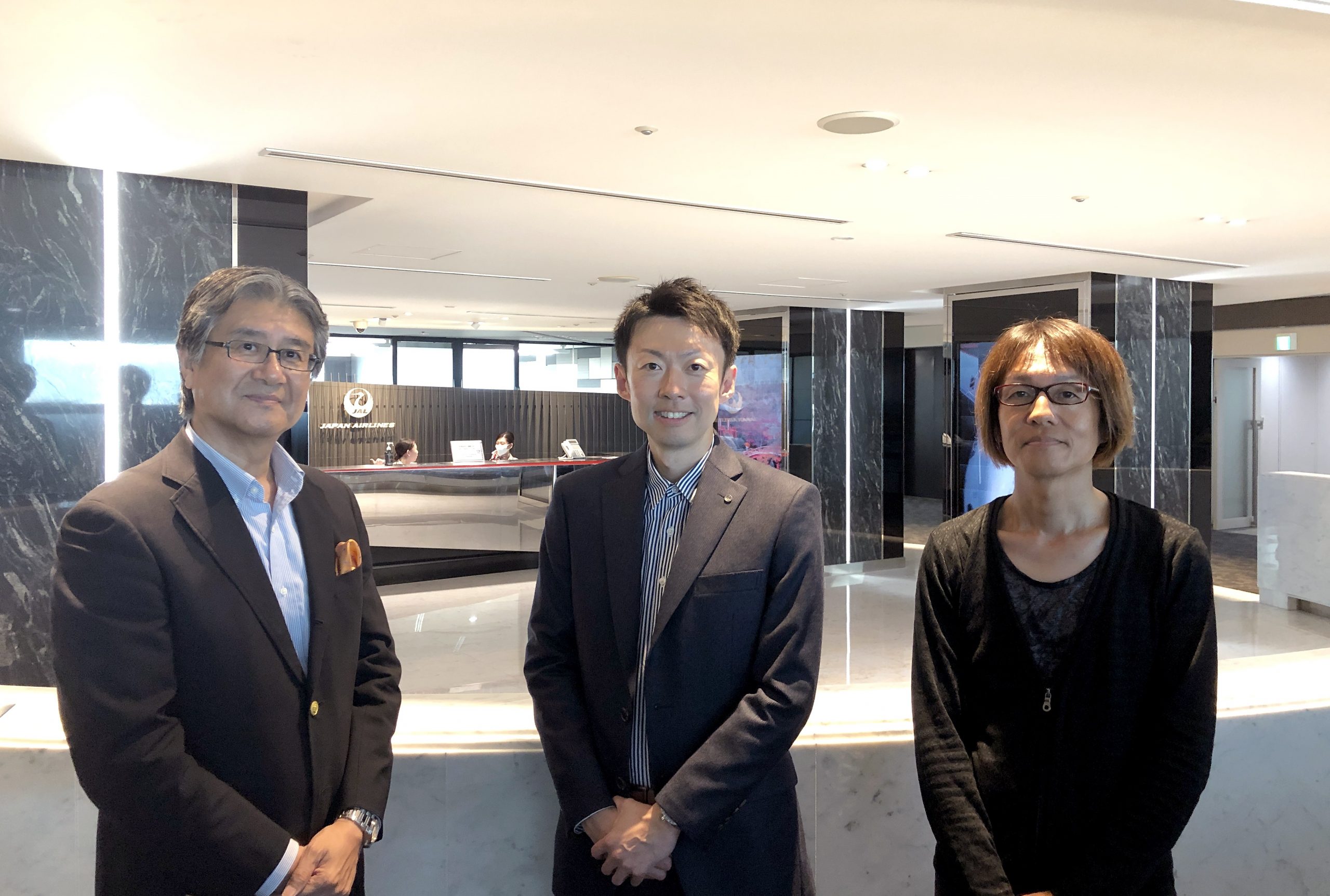 In the first installment of "Visiting PRM Practice Companies," we visited Japan Airlines Co., Ltd..
In the first installment of "Visiting PRM Practice Companies," we visited Japan Airlines Co., Ltd..I have always said that a brand is created in the hearts and minds of customers, and I believe that JAL is a great example of a company that has succeeded in restoring its damaged brand image by making strong connections with its customers in the community and having them become partners with the company. By utilizing offline events as well as online, JAL's customers with strong passion for the brand were able to further share their passion with others, and this was the driving force behind the revival of the JAL brand.
It is wonderful that the company thought from the beginning about what kind of experience to share with customers, rather than just using SNS for the sake of using SNS. I believe that customers who wear "nametags" with their user names on them with pride and affection will continue to inspire employees and make the JAL brand shine. (Interviewer: Tatsuo Ishii)
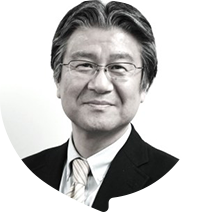 Tatsuo Ishii, Executive Advisor, eLife Inc. Tatsuo Ishii, Executive Advisor, eLife Inc.He served as manager of a number of brands for 14 years at Kao Corporation, where he also launched Agience as a new business. In 2003, he established the Digital Marketing Center, where he was involved in the planning and operation of web-based strategies and established the Digital Marketing Center as the head of the center. In 2017, he was appointed as Executive Advisor for eLife Inc.. He is a part-time lecturer at the Graduate School of Business Administration, Waseda University, a Marketing Meister of the Japan Marketing Association, a member of the Digital Media Committee of the Japan Advertisers Association, the Chairman of the Brand Experience Jury of the Dentsu Advertising Awards, and an auditor at C Channel K.K. He is a leading marketing expert. |
(Composition: Atsuo Suzuki)

